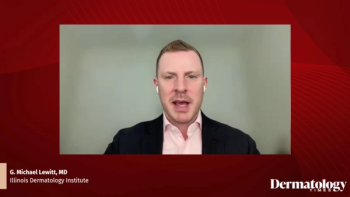
Overview of Vitiligo
Nada Elbuluk, MD, and David Rosmarin, MD, provide an overview of vitiligo, its prevalence, and potential triggers.
Episodes in this series

David Rosmarin, MD: Dr Elbuluk, when a patient comes in to see you, what do you tell them vitiligo is?
Nada Elbuluk, MD: I break it down by telling them the simple explanation: vitiligo is an autoimmune disease. There’s more involved, but I like to generalize it into the autoimmune category. Most patients have at least heard that term or are familiar with it. I tell them what’s happened: their antibodies, which normally are there to protect them from things like viruses and bacteria, are attacking part of their body, specifically a cell called the melanocyte. Wherever those melanocytes are getting attacked, they’re getting white patches. I also explain to them that it’s not their fault that they got vitiligo. From the moment they’re born, they’re genetically predisposed to getting it. At some point in their life, there’s insult, change, or trigger—something happens that leads to the onset of the vitiligo. Sometimes they may be aware of the moment that they got their first patch, and what was happening in their life. Other times, people can’t correlate it to anything. That’s how I like to introduce the discussion. How about yourself?
David Rosmarin, MD: That’s a good point about. Some patients are worried they did something to cause the vitiligo. Maybe there were some instigating events, but we don’t want patients to blame themselves. Often it’s idiopathic, and we don’t know why people get it. Maybe there’s a genetic predisposition, some environmental event that triggers it. I also describe it to patients in terms of your immune system, which should fight infections, attacking pigment cells in the body. It’s commonly thought of a disease of skin of color. Do you find that that’s the case? Do you feel it affects everybody? What’s your sense?
Nada Elbuluk, MD: I love that you brought that up because it’s a big myth that vitiligo is a skin of color disease. It’s not. It’s more visible in darker skin, so there’s a much greater contrast between vitiliginous patches in someone who has dark skin. People notice it more in darker skin. In my practice, I have patients of many different racial and ethnic backgrounds who have vitiligo. In my own experience, I haven’t seen it to be represented more in any particular demographic group. When you look at the literature, it doesn’t occur, from an epidemiology standpoint, more often in any population. What do you find?
David Rosmarin, MD: I agree. It affects all races and ethnicities. It’s important not to make assumptions in terms of how it affects people. Some may want to know what their diagnosis is. Some may want to halt the progression of their disease. Some may want all their pigment back. There’s certainly a cultural component, depending on an individual’s background, that affects how they view their disease. Some are devastated by it, and some aren’t. It’s important to respect people’s wishes and make sure they have that autonomy. Is that what you find?
Nada Elbuluk, MD: Yes. I completely agree. You brought up a couple of important points. One is that we can’t make an assumption about how 1 is affected by vitiligo based on what we see. I’ve had patients with 1% or less body surface area who are completely devastated and distraught. I’ll have others who have 40% of their body, but they care about their face or what’s exposed and aren’t as bothered by the other areas. The spectrum varies on how people are affected. The other assumption is people think that if it’s not as visible, it doesn’t bother people as much. I’ve had fair-skinned patients with vitiligo. To someone who sees them on the street, it isn’t visible. But to the person who has it, it’s obvious. They can be profoundly affected by it. When it’s not clear to the world, we can’t assume it doesn’t bother them as much. And the converse too. With some darker-skinned people who have it, it’s obvious. They may not be as devastated as you think, or they might be. It’s important to go in with no assumptions.
Transcript edited for clarity
Newsletter
Like what you’re reading? Subscribe to Dermatology Times for weekly updates on therapies, innovations, and real-world practice tips.



















